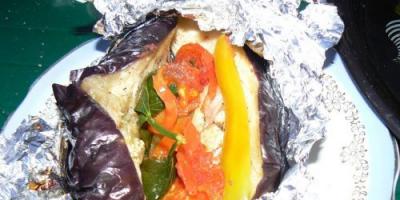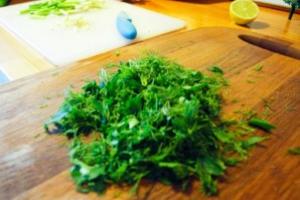Decorative pumpkin has many advantages, it is a decoration of the garden, its cultivation does not require much trouble. This original “beauty” will delight any gardener with its decorativeness and unpretentiousness.
In one summer, the stems of the plant can reach 6 meters. In the first month you can create a “green screen” from a pumpkin, stems up to 2.5 meters long allow this to be done.
The plant can be entwined:
- gazebo,
- fence,
- arch.
But this plant is not only distinguished by its lush greenery. The green background will be decorated with bright flowers already in July. After a month, the plant will surprise you with its original fruits, which have different shapes and colors. Unlike the round or slightly elongated fruits of a regular pumpkin, the shapes of decorative fruits amaze with the variety of shapes and colors. Stars, pears, tangerines and other pumpkins will hang on your green screens original forms.
If you plant a mixture of decorative pumpkin seeds, you will get an interesting “green screen” with a variety of different types fruits
Is this pumpkin edible?
Garden or interior designers are more interested in the original beauty. Cooks prefer not to use its fruits. Although there are varieties that have edible pulp. The insides of the turban-shaped pumpkin are sweetish, the edible fruit of Lagenaria.

Based on the labels on the seed packets, it is impossible to know for sure whether the fruit of this species is edible.
Even edible pumpkins cannot be eaten if they are ripe. Ripe fruits have hard, coarse flesh. It cannot be used for feeding livestock either.
The most popular varieties
Let's get acquainted with the fruits of common varieties of decorative pumpkins:
Mandarin

Lives up to its name. They are just as small, orange, round shape, weighing up to 300 g.
Chit Boo ( Baby Boo

White pumpkins grow up to 10 cm in diameter. They have a smooth crust and are considered edible.
Sweet Dumpling

The fruits of the variety reach 500 g and look very original. Pumpkins with yellowish or white ribs, between which there are dark stripes with white specks.
Bischofsmutzen

Surprises with pumpkins from two hemispheres. Half of the skin is white, and the other half is green or red;
Kleine Bicolor

By the end of summer, the plant of this variety surprises with small pears, painted in two colors. Bottom – dark green with stripes yellow color, at the top - yellow. The plant belongs to the group Lagenaria siceraria (bottle lagenaria).
Cou-Tors Native

Variety of torticollis , fruits are located among the foliage - swans with bubble, sunny orange color shell.
They call it the shape of a pumpkin:
- warty having a pear-shaped or rounded shape with wart-type growths of different colors;
- star-shaped, with a maximum diameter of up to 15 cm, flattened or elongated shape, varied colors, several colors are possible for one specimen;
- pear-shaped, pear-shaped pumpkins, up to 12 cm in size, on two-colored ones there is a clear boundary between the colors;
- Vicofolia, whose leaves resemble blades, with green fruits with a stripe of milky color or speckled, round in shape;
- turban-shaped, in Russia such decorative zucchini is called “mushrooms”, tangerine or marble green in color;
- bottled, gourd or lagenaria, the fruits are colored green marble.
Mixtures of decorative pumpkins are small-fruited and large-fruited. They consist mainly of plants with the same characteristics. The pumpkin varieties found in the Crown mix have star-shaped fruits.
How to grow such a crop in a summer cottage?
Stages of growing decorative pumpkin:
- Preparing the seeds– disinfect, harden, germinate.
- Sow seeds in the ground. The end of April or the beginning of May is suitable for sowing seedlings.
- The plant does not like transplantation, so we sow one seed at a time in a pot with a diameter of at least 15 cm.
- After 12 days sprinkle with earth, up to the cotyledon leaves.
- Twice we feed, you can use mineral fertilizers or slurry.
- Planting seedlings at 30 days of age, with five true leaves.
- Before planting, they dig up the soil, apply fertilizers.
- Preparing the holes, pour at least 1 liters of water into each.

- Can sow directly into the ground, it is better after the frosts have passed, the soil temperature is at least 13 degrees.
- During water and feed plant, and also loosen the soil and weed out weeds.
- We install a reliable support structure plants.
- We pinch the main shoot, grown to 1 meter to form lateral shoots.
- During getting rid of pests and diseases.
- We collect fruits only after full ripening, avoiding freezing.
The growing area should be sunny, the soil should be well warmed before planting. The plant is not frost-resistant and is afraid of frost.
How is decorative pumpkin used?
Dried pumpkins can be used for:
- Crafts self made : stands for candles, vases, lanterns, boxes, flower pots and others;
- Burnout and artistic painting;
- Interior decoration premises and landscape design.
Original compositions will decorate any interior and can be a pleasant gift.
Properly dried fruit can be stored for many years; it is only necessary to remove the pulp from large-fruited pumpkins.
Conclusion
Decorative pumpkin is an excellent option for landscaping your garden.
Its original fruits are irreplaceable for use in design work. Having such advantages, the plant does not require special care when growing. A gardener who grows this amazingly beautiful plant will gain many positive emotions.
author Elena Chernysheva
Almost anyone who sees a decorative pumpkin for the first time with its emerald leaves, huge yellow flowers and original miniature fruits of various shapes and shades is usually amazed: “Oh, what is this?”
Decorative pumpkin is not only an original plant, but also very unpretentious and, most importantly, extremely practical: with the help of its tendrils, this vine can climb up to a height of 4 m in just one summer, decorating an arch, gazebo, fence or wall of a house.
Is decorative pumpkin edible?
For some reason, the most popular question about decorative pumpkins is: “Is it edible?” It seems that times are by no means hungry now, but, apparently, the very word “pumpkin” evokes indispensable associations with cooking, and not at all with beauty!
So: while the fruits of the decorative pumpkin are still small, their skin is soft, you can eat them. But why? After all, even at such a young age, they are very much inferior in taste to their closest relatives from the same pumpkin family: zucchini, zucchini, squash and real large pumpkins. So, leave the decorative pumpkin for decoration and eat something else instead!
Decorative pumpkin as a vine
The ideal place to plant a decorative pumpkin is next to a vertical support (for example, a chain-link fence or the south wall of an outbuilding). That is, for a decorative pumpkin as a support in the garden, anything that you want to decorate with something is suitable.
However, a decorative pumpkin can also be used in the front part of the garden, spreading its vines along a gazebo, pergola or arch (for example, separating a vegetable garden from flower beds). The pumpkin looks very unusual on the trunk of an old, withered apple tree that you still can’t cut down. In general, pumpkins look especially good in gardens in the now fashionable rural style, where garden and flower bed plants often coexist.
But at the “Novorussian” dachas in classic style In a regular park, the pumpkin will look too primitive and rude, discordant with the roses and thujas that are obligatory in such cases.
The decorative pumpkin grows very quickly (not a single annual vine can compare with it), and by mid-July the screen from it grows quite tall and dense. The pumpkin reaches its maximum decorative effect in August, when it completely curls the support provided to it, creating a solid green screen, decorated with large bright yellow flowers and elegant small fruits.
What does a decorative pumpkin need?
When choosing a place for a decorative pumpkin, two conditions should be observed.
Firstly, it is necessary to choose a fairly reliable support for it, since by the end of summer the stems and leaves of the vine form a large green mass.
The second condition is that it is better to plant decorative pumpkins in a sunny place (light partial shade is acceptable). That is, of course, you can plant it near the northern wall of the house, but then you should not count on an abundance of flowers and, especially, fruits.
What doesn't a decorative pumpkin like?
From annuals climbing plants decorative pumpkins are truly one of the most unpretentious. Even a novice gardener can grow them. Their only disadvantage is their absolute frost resistance: even with a light frost of -1 degree, the plant dies. That is why it is recommended to grow decorative pumpkins through seedlings. However, the least labor-intensive and easiest way is to sow their seeds directly into the ground in mid-May. If late spring frosts are expected, the emerging seedlings can be covered plastic bottles or film.
In addition to frost, decorative pumpkins really do not like lack of moisture and poor soil. The more often you water it and fertilize it (especially with organic fertilizers), the better it will grow.
That's the whole secret!

Now let's talk a little about the fruits of the pumpkin, because of which it is, in fact, called decorative. Their size rarely exceeds 10-15 cm, and their shape can be round, star-shaped, bottle-shaped, boletus-shaped, etc. There are pumpkin varieties with both smooth and bumpy skin, the shades of which vary from white to yellow, orange or green. The striped, spotted or two-colored fruits of decorative pumpkins look the most fun.
These small fruits of cheerful colors look very cute on the plant itself, but very often decorative pumpkins are grown in order to collect ripe fruits in the fall, dry them and use them to create original compositions (for example, with dried flowers). In addition, these pumpkins can be used to create real works of art. To do this, any design is applied to dried pumpkins with special paint, and then varnish is applied to fix the paint.
In order for pumpkins to be stored for a long time, two rules must be followed: they must be fully ripe, that is, with very rough and thick skin, and also picked before the first autumn frosts.
In addition, so that their color (if you do not cover the fruits with paint) does not fade so much, it is better to store pumpkins away from direct sunlight.
Decorative pumpkins and children
If you want to introduce your child to gardening, then there is nothing better than growing a decorative pumpkin with him!
Firstly, it has very large seeds, and even the smallest child can plant them.
Secondly, a decorative pumpkin grows at a tremendous speed (especially if the summer is hot and there is sufficient watering), and the baby will be able to quickly see the results of his labor.
Thirdly, small children love to tinker with water, and therefore love to water everything. And decorative pumpkins need frequent watering!
And finally, absolutely all children like its miniature, very bright and unusual fruits: there is something toy-doll-like about them. In addition, the fruits can be dried and painted using special paints and varnish (adult help will be needed here). Your child will be happy to show them off to friends and relatives. By the way, even the most primitive children's drawings look very unusual on small pumpkins!
About varieties of decorative pumpkin
Until recently, only mixtures could be found in stores different varieties decorative pumpkin. Sometimes we came across a series of varieties selected according to a certain characteristic (for example, “Mosaic” and “Zvezdopad”, produced by the NK corporation).
Then the Poisk company pleased gardeners not with mixtures, but with individual varieties of decorative pumpkin. For example, in the “Shahrazade” series you can find varieties such as the bright orange “Turkish Turban”, multi-colored “Stars” and “Creamy White Baby”, and in the “Kaleidoscope” series - varieties “Two-color ball”, “Orange ball” and “Warty mixture.”
As far as various types garden flowers, I am a categorical opponent of purchasing all kinds of seed mixtures. As a rule, they grow into both quite interesting specimens and absolutely banal ones (and that’s the majority of them). That is, when planting seeds from a mixture into the ground, one cannot assume what will grow as a result. But in the case of decorative pumpkins, I am an active supporter of mixtures of varieties! The fruits that emerge from such mixtures are so unusual and varied that growing a decorative pumpkin also becomes a very exciting activity: it is always terribly interesting what will come out of such identical (at first glance) seeds!
Therefore, when the fruits on the vines of decorative pumpkins from a mixture of seeds begin to set, almost every day I check what kind of miracle is growing this time.
All about pumpkin on the website website
|
|
Weekly Free Site Digest website
Every week, for 10 years, for our 100,000 subscribers, an excellent selection of relevant materials about flowers and gardens, as well as other useful information.
Subscribe and receive!
Decorative pumpkin, which is successfully used to create hedges, is becoming increasingly popular among gardeners. Its powerful green shoots creeping upward can instantly form living “screens”, and in the fall fruits with bright colors and atypical structure appear. Such decoration is pleasant to admire not only for the owners, but also for the guests. If such decoration of your dacha does not leave you indifferent, you should definitely buy decorative pumpkin seeds and start experimenting.
In addition to its external originality, this culture has many other advantages. The use of the fruits of this crop is multifaceted. And here are just some of the reasons why growing such a pumpkin on your own plot is beneficial.

Food suitability
 The data were derived by breeders for aesthetic reasons; scientists did not take into account the taste characteristics of the crop at all. However, there are exceptions to any rule. So it is with decorative pumpkin - its fruits can be edible, but only at a young age. Fully ripe ones with a dense crust are not tasty and do not represent nutritional value neither for people nor for animals.
The data were derived by breeders for aesthetic reasons; scientists did not take into account the taste characteristics of the crop at all. However, there are exceptions to any rule. So it is with decorative pumpkin - its fruits can be edible, but only at a young age. Fully ripe ones with a dense crust are not tasty and do not represent nutritional value neither for people nor for animals.
However, there are varieties that have the indication “edible” on the bag. For example, there are varieties of turban pumpkin with sweet and juicy pulp. Varieties such as Sweet Dumpling, Baby Boo, and Jack Bee Little are also suitable for food. Typically, the use of mini-fruits involves making containers for stuffing.
If the manufacturer does not give specific instructions on this matter, then you can try. In addition, the price of this variety of pumpkin is not much different from the cost of ordinary seeds.
Variety of varieties
Decorative pumpkins do not belong to a separate species; they are only transformed varieties of ordinary hard-barked pumpkin. With one exception - lagenaria ( bottle gourd). To imagine what a decorative pumpkin looks like, you need to familiarize yourself with the main varieties.

Cultivation and storage
 It is recommended to harvest ornamental pumpkins before the onset of frost, since fruits caught in frost are not stored for a long time. Ripe pumpkins, whose crust has hardened, are dried. Since it is best to dry a large-fruited pumpkin by removing the soft core and seeds, for this purpose the cap is cut off. Drying of small fruits is carried out in their entirety, without removing the core.
It is recommended to harvest ornamental pumpkins before the onset of frost, since fruits caught in frost are not stored for a long time. Ripe pumpkins, whose crust has hardened, are dried. Since it is best to dry a large-fruited pumpkin by removing the soft core and seeds, for this purpose the cap is cut off. Drying of small fruits is carried out in their entirety, without removing the core.
To preserve the color of the fruits, they are laid out in a well-ventilated room in which there is no sunlight.
Cultivating a designer pumpkin is no different from that of an ordinary one.
 Seeds are planted in the garden with the arrival of summer. The best option growing in mid-latitudes by seedlings. To avoid injury to plants during planting, seeds are grown in peat cups. Look for a place for the garden bed that is sunny and warm, with fertile and loose soil. The culture loves watering and fertilizing.
Seeds are planted in the garden with the arrival of summer. The best option growing in mid-latitudes by seedlings. To avoid injury to plants during planting, seeds are grown in peat cups. Look for a place for the garden bed that is sunny and warm, with fertile and loose soil. The culture loves watering and fertilizing.
Decorative pumpkin is one of the most unpretentious plants, thanks to which it has become quite widespread in our country and abroad. These pumpkin varieties were bred solely for the purpose of decoration. garden plot, and during the selection process the standard taste characteristics were not taken into account, therefore the fruits of these species are not used for food purposes.
Growing from seeds
- seed germination indicators should be checked by test soaking or sowing;
- untreated seeds from manufacturers, as well as independently collected seed material, should be subject to mandatory disinfection in a solution of potassium permanganate;
- good result allows soaking seeds in any growth stimulant or solution based on conventional wood ash;
- direct sowing is carried out exclusively with germinated seeds, so the seed material should be soaked on a damp cloth.

For sowing and growing ornamental crops, it is necessary to allocate well-lit and sun-warmed areas with fertile soil. Climbing pumpkin should not be grown in high lying areas. groundwater, as well as after harvesting melons. The site for planting should be prepared in advance by deep digging, removing weeds and improving the soil characteristics with humus and wood ash. Should be considered, that sowing seeds in open ground can only be carried out after the soil has warmed up. IN middle lane In our country, it is recommended to carry out sowing work no earlier than the last ten days of May, and in the southern regions, sowing seeds can be done as early as April.
How to grow a decorative pumpkin (video)
Main types
If just recently the choice decorative species pumpkin supply was very limited, now gardeners and gardeners have something to please themselves with. There are several types of decorative vegetable crop, which can decorate even the most unusual landscape. Not only varietal mixtures such as “Uyut-decor”, “Artist” and “Souvenir” are popular, but also individual varieties of decorative pumpkin.
| View | Characteristics and features | Names of popular varieties |
| Pear-shaped | The fruits are pear-shaped, with a relatively dense surface, which can be either single-colored or two-colored. | Kleine Bicolor and Kleine Birne Bicolor |
| Tangerine | A plant with very small, rounded fruits of a very characteristic and rich orange color. | "Orange" |
| Star-shaped | The fruits are characterized by an external similarity to starfish and can be either single-colored or multi-colored | "Kronen" |
| Warty | The fruits are pear-shaped or round in shape and have a surface covered with many tubercles of yellow, white, fiery orange or green color | Warty "Assorted" |
| Turban-shaped | The fruits have smooth skin, which can successfully combine bright orange or greenish-marble coloring | "Turkish turban" |
| Figolifolia | The plant is characterized by very decorative lobed leaves and variegated green-white, striped or speckled fruits | "In memory of Tarakanov" |
| Lagenaria | An annual creeping vine with characteristic faceted pubescent stems, the length of which reaches 15 m, and the leaves have a corrugated pentagonal appearance | "Flask", "Jug", "Intercept", "Bottles", "Speckled Goose", "Mace" and "Dinosaur" |
| Benincasa bristly-pilose | Young fruits have strong pubescence, and their surface acquires a strong waxy coating as they ripen. | "Sharkina", "Beijing Early", "Beijing ton-ngua-i-chuar-ling" and "Black-skinned ton-gua" |
Cultivation technology
Annual climbing decorative pumpkins deservedly belong to the category of the most unpretentious plants, so they are often grown even by novice gardeners. The only disadvantage of most decorative species is the almost complete lack of frost resistance. This feature involves the use of seedling growing methods.
It should also be remembered that for decorative varieties Insufficient soil moisture and growing on too poor soils can be detrimental to pumpkins. For the cultivation of these types of pumpkins, it is recommended to allocate areas represented by loose, well-drained soils with high humus content. It is desirable that the soil has a neutral reaction.
Complete care ornamental plant requires mandatory daily irrigation and fertilizing every two weeks. Organic fertilizing of crops involves the use of mullein solution, diluted with water in a ratio of 1:10 or solution bird droppings, diluted with water in a ratio of 1:20. As mineral fertilizers It is recommended to add a solution based on 30 g of ammonium nitrate, 30 g of potassium sulfate and 50 g of superphosphate.

Decorative pumpkin needs fairly abundant irrigation, which should be carried out at the rate of three buckets of water for each square meter landing At the stage of mass flowering of the plant and the formation of ovaries, the frequency of watering should be increased. Watering must be carried out exclusively with warm and settled water, the temperature of which should not be lower than 20-21°C. Use for irrigation cold water often becomes the main cause of root rot and death of ornamental crops.
To protect the above-ground part of the plant from damage by slugs, it is recommended to treat it with a mixture based on slaked lime and wood ash. For preventive purposes, the leaves and stems of the plant should be sprayed with a 1% solution of Bordeaux mixture. If there is too much thickening of the climbing pumpkin planting, it is recommended to remove several side shoots once, which will improve the lighting of the ornamental crop and make it more attractive and complete appearance.

Use in landscape and design
A climbing pumpkin looks ideal on a vertical support, which can be a chain-link mesh or a south wall. Quite often, decorative pumpkins are used to decorate a gazebo, pergola or arch. The growth of decorative pumpkin is very active, so by mid-summer the plant is already quite tall and dense.
In addition to climbing or climbing species, there are also bush decorative pumpkins that are grown in conditions personal plot almost the same as zucchini, popular in our country. Such varieties and species most often serve as decoration for flower beds and edgings, and are also used in the design of borders and garden paths.

Such species acquire maximum decorative value in the last summer month, when against the backdrop of a solid green screen bright accents Large bright yellow flowers and elegant small fruits stand out.
Fruits of ornamental species should be collected before the onset of sudden negative temperatures, after which they are dried at room temperature.
Pumpkin: choosing a variety (video)
Dried fruits of almost any variety of decorative pumpkin can be used for crafts such as salt shakers, snuff boxes and vases, and are also widely used in the design of phyto-compositions. Thanks to the rich variety and species diversity, climbing pumpkin can become a very successful alternative to any decorative garden vine.








